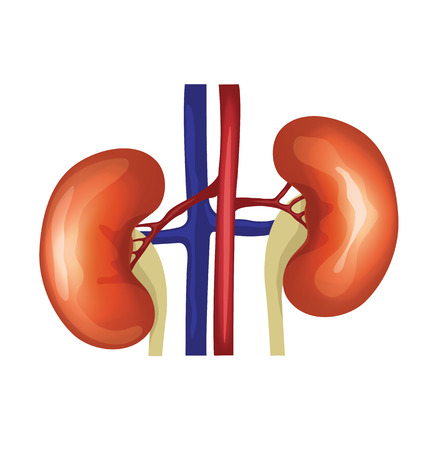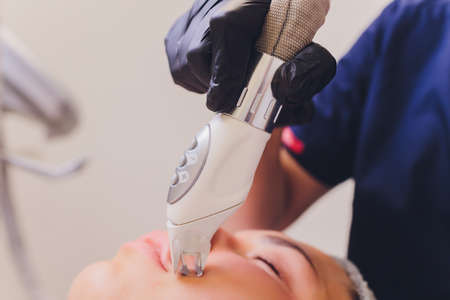Introduction to Surgical Body Contouring
In recent years, surgical body contouring has become increasingly sought after across the UK, reflecting a growing interest in personal health, confidence, and appearance. As more individuals strive for a silhouette that aligns with their self-image, the demand for tailored solutions such as liposuction and male tummy tucks has surged. These procedures offer an effective way to address stubborn fat deposits and loose skin that may not respond to diet or exercise alone. Many people consider surgical interventions not only for aesthetic enhancement but also for psychological benefits, as achieving desired body contours can boost self-esteem and overall well-being. In the context of modern British society—where both men and women are encouraged to embrace body positivity while pursuing realistic goals—body contouring surgeries provide practical options for those looking to refine their physique in a safe and controlled manner.
2. Understanding Liposuction: Techniques and Suitability
Liposuction is a surgical procedure designed to remove stubborn fat deposits from specific areas of the body, resulting in a more contoured appearance. In the UK, it remains one of the most popular cosmetic surgeries for both men and women seeking effective body contouring solutions. The process involves using a cannula—a thin, hollow tube—to break up and suction out excess fat beneath the skin. While this may sound straightforward, there are several techniques employed by British clinics to optimise results and reduce downtime.
Common Liposuction Techniques Used in British Clinics
| Technique | Description | Key Advantages |
|---|---|---|
| Traditional (Suction-Assisted) Liposuction | The original method where fat is manually dislodged and suctioned out using a cannula. | Reliable for large areas; widely available. |
| Tumescent Liposuction | A saline solution with anaesthetic is injected into the target area before fat removal, making extraction easier and reducing bleeding. | Less bruising; local anaesthetic; faster recovery. |
| Ultrasound-Assisted Liposuction (UAL) | Ultrasound energy liquefies fat cells, which are then removed via suction. | Effective for dense or fibrous areas; precise sculpting. |
| Laser-Assisted Liposuction (LAL) | Laser energy melts fat prior to removal while promoting skin tightening. | Smoother results; minimal scarring; potential skin tightening benefits. |
Who Is an Ideal Candidate for Liposuction?
Liposuction is not a substitute for weight loss or a remedy for obesity. Instead, it is best suited to individuals who are close to their ideal body weight but struggle with localised fat that resists diet and exercise. The following characteristics often define suitable candidates in the UK:
- Stable Weight: Candidates should have maintained a steady weight for several months prior to surgery.
- Good Skin Elasticity: Firm and elastic skin helps ensure smoother post-operative contours.
- Non-Smokers: Smoking increases risks and slows healing, so cessation is strongly advised.
- No Serious Medical Conditions: Good overall health is essential to minimise surgical risks.
- Realistic Expectations: Understanding what liposuction can—and cannot—achieve is vital for satisfaction with results.
NHS Considerations and Private Clinics
Liposuction for purely cosmetic reasons is rarely available through the NHS. Most individuals opt for reputable private clinics registered with the Care Quality Commission (CQC). Prioritising consultations with GMC-registered surgeons ensures safety and transparency throughout the process. Ultimately, liposuction remains an effective tool for refining body shape when performed on appropriate candidates by experienced professionals in regulated environments.

3. Male Tummy Tuck (Abdominoplasty) Explained
When it comes to surgical body contouring, the male tummy tuck—medically referred to as abdominoplasty—deserves particular attention for its ability to address specific aesthetic and functional concerns unique to men. Unlike traditional tummy tucks often performed on women, the male abdominoplasty is tailored to masculine body shapes, focusing on creating a firm, flat abdominal profile that complements broader shoulders and a more angular physique.
What Is a Male Tummy Tuck?
A male tummy tuck involves the removal of excess skin and fat from the abdomen, as well as tightening of weakened or separated abdominal muscles. This procedure is particularly effective for men who have experienced significant weight loss or struggle with stubborn abdominal bulges that do not respond to diet and exercise. The aim is not only to create a flatter stomach but also to restore definition and proportion in line with typical male body goals.
What to Expect from Surgery
The surgery itself usually takes between two and three hours under general anaesthesia. A horizontal incision is made along the lower abdomen, typically concealed beneath underwear or swimwear. Through this incision, the surgeon removes unwanted tissue and tightens the underlying muscle structure. In some cases, the belly button may be repositioned for a natural appearance. After surgery, patients can expect swelling and discomfort for several days, with most returning to light activity within a fortnight.
How It Addresses Male Body Goals
The outcome of a male tummy tuck is more than just cosmetic; it can improve posture by supporting weakened core muscles and boost confidence by achieving a toned midsection that reflects hard work and healthy living. The procedure is particularly popular among British men seeking long-term solutions after lifestyle changes or major weight loss. By understanding these nuances, men can make informed decisions about whether abdominoplasty aligns with their expectations and desired results.
4. Choosing Between Liposuction and Tummy Tuck
For many British patients considering body contouring, the decision between liposuction and a male tummy tuck (abdominoplasty) can seem daunting. Both procedures offer significant improvements in physique, but they are tailored to different needs, body types, and expectations. Understanding these distinctions is essential for making an informed choice that aligns with your goals and lifestyle.
Understanding Your Body Shape and Desired Outcome
Liposuction is ideal for individuals who are generally close to their target weight but struggle with stubborn pockets of fat that resist diet and exercise. In contrast, a male tummy tuck addresses not just excess fat but also loose or sagging skin and weakened abdominal muscles, often following significant weight loss or ageing. The key difference lies in whether your main concern is isolated fat deposits or more extensive abdominal laxity.
Comparing Procedures: Liposuction vs Tummy Tuck
| Aspect | Liposuction | Male Tummy Tuck |
|---|---|---|
| Best For | Targeted fat removal | Excess skin & muscle tightening |
| Scarring | Minimal (small incisions) | More noticeable (longer incision along lower abdomen) |
| Downtime | Shorter recovery (a few days to 1 week) | Longer recovery (2-4 weeks or more) |
| Results Visible | Within weeks; final shape after swelling subsides | Immediate improvement, full results as healing progresses |
| BMI Suitability | Best if BMI is near normal range | May be suitable for those with higher BMI post-weight loss |
| Main Goal | Sculpting & contouring specific areas | Tightening & flattening the abdomen comprehensively |
Cultural Considerations for UK Patients
British patients often prioritise natural-looking results and minimal disruption to daily life. It’s important to have realistic expectations: liposuction won’t significantly tighten loose skin, while a tummy tuck involves a more noticeable scar but can dramatically improve abdominal profile. Consulting with a GMC-registered surgeon who understands your body goals and local aesthetic preferences ensures the best outcome. Always consider aftercare logistics—such as time off work, available support at home, and access to NHS follow-up if needed—when choosing your procedure.
5. Risks, Recovery, and Aftercare in the UK Context
Understanding Potential Risks
Like all surgical procedures, both liposuction and male tummy tucks come with inherent risks. Common complications include swelling, bruising, temporary numbness, and minor scarring. More serious but less frequent issues can involve infection, blood clots, or uneven contours. In the UK, it is essential to choose a GMC-registered consultant plastic surgeon and a CQC-approved clinic to minimise these risks. Pre-operative assessments are comprehensive to identify any underlying health concerns before proceeding.
Typical Recovery Times
Recovery timelines vary based on the extent of surgery and individual factors. For liposuction, most patients in the UK can return to desk-based work within one week, though strenuous activities should be avoided for three to four weeks. Male tummy tuck recovery is generally longer; expect two to three weeks off work and up to six weeks before resuming exercise or heavy lifting. Swelling and discomfort typically subside gradually over several weeks, with final results visible after a few months.
Aftercare Recommendations
Effective aftercare is crucial for optimal results. Patients are advised to wear compression garments as recommended by their surgeon—usually for up to six weeks—to help reduce swelling and support healing tissues. Keeping surgical sites clean and dry, attending scheduled follow-up appointments, and promptly reporting any unusual symptoms (such as excessive pain or redness) are important steps in aftercare. Over-the-counter pain relief can usually manage discomfort, but prescription medications may be provided if necessary.
NHS Guidance and Support
The NHS provides valuable resources on cosmetic surgery safety but generally does not fund body contouring procedures unless there are exceptional clinical needs (e.g., significant functional impairment post-weight loss). However, NHS guidance encourages patients to thoroughly research providers and understand their rights regarding informed consent and complaint procedures. The Care Quality Commission (CQC) offers public reports on registered clinics for added transparency.
Local Patient Support Networks
Many UK cities have peer support groups—both online and in-person—for individuals considering or recovering from cosmetic procedures. These groups offer practical advice and emotional support from those with lived experience. Additionally, reputable private clinics often provide dedicated patient liaison teams to assist with queries throughout the recovery process.
Final Thoughts on UK Aftercare
Recovering from body contouring surgery in the UK requires careful adherence to medical advice and realistic expectations about outcomes. By following best-practice aftercare guidelines and seeking out local resources when needed, patients can significantly improve their experience and satisfaction with surgical results.
6. Realistic Expectations and Psychological Considerations
When considering surgical solutions for body contouring such as liposuction or a male tummy tuck, it is crucial to approach the process with realistic expectations and a healthy perspective. These procedures can offer significant improvements to one’s appearance, but it is important to understand that they are not miracle cures or substitutes for a balanced lifestyle. While many patients experience enhanced self-confidence following surgery, the results are best seen as a complement to ongoing health and fitness efforts rather than a complete transformation.
The Importance of Honest Communication
Before undergoing any body contouring procedure, open dialogue with your consultant or surgeon is essential. During consultations in the UK, reputable practitioners will discuss what can and cannot be achieved based on your individual circumstances. It’s vital to express your goals clearly and listen carefully to professional advice regarding likely outcomes, potential risks, and recovery timelines. This transparency helps ensure satisfaction with the eventual results and reduces the risk of disappointment.
Understanding Self-Image
Liposuction and male abdominoplasty can provide a physical boost by removing stubborn fat or excess skin, but they may not resolve underlying concerns about self-image. Some individuals may require time to adjust to their new appearance, while others may find that deeper issues persist despite surgical intervention. Recognising this possibility ahead of time encourages a healthier mindset throughout the journey.
The Role of Psychological Well-Being
Psychological well-being plays a pivotal role both before and after surgery. Many UK clinics recommend considering support from mental health professionals if you have concerns about body image or emotional readiness for change. Taking time to reflect on your motivations for surgery and preparing for the post-operative adjustment period is just as important as researching surgical options themselves. Ultimately, embracing a holistic approach—one that values both physical outcomes and emotional resilience—can lead to greater long-term satisfaction with your body contouring experience.


